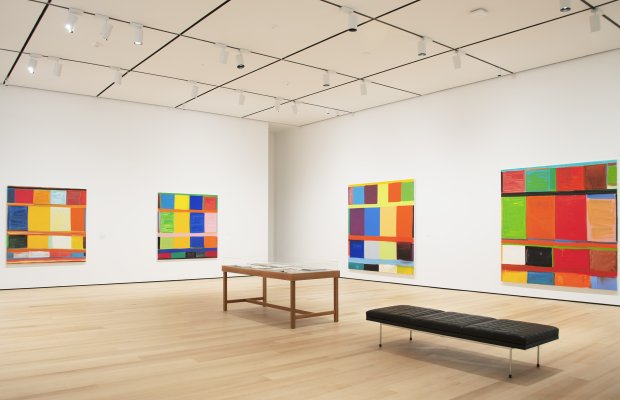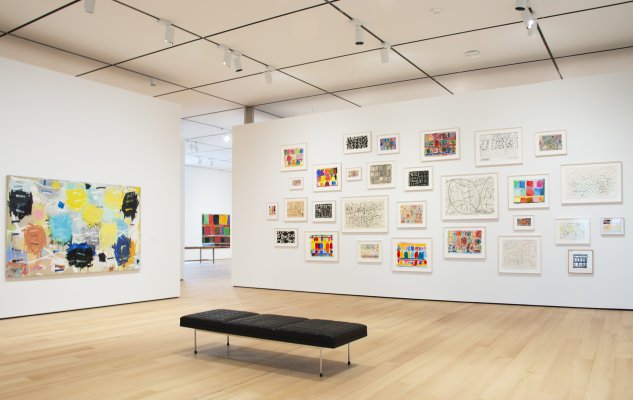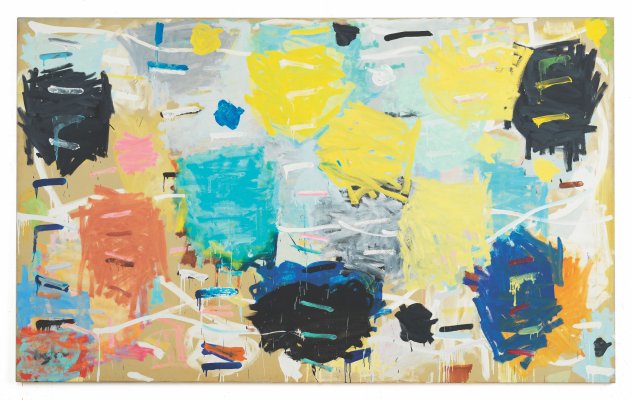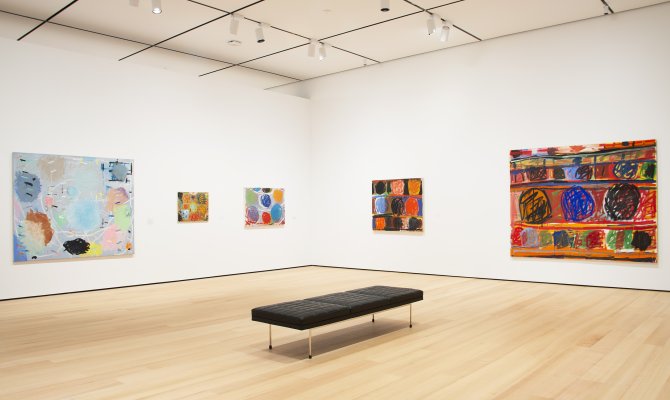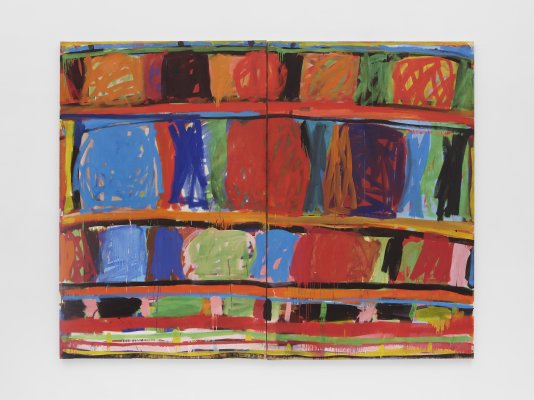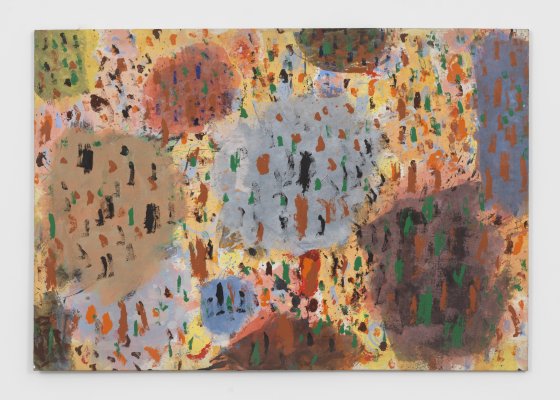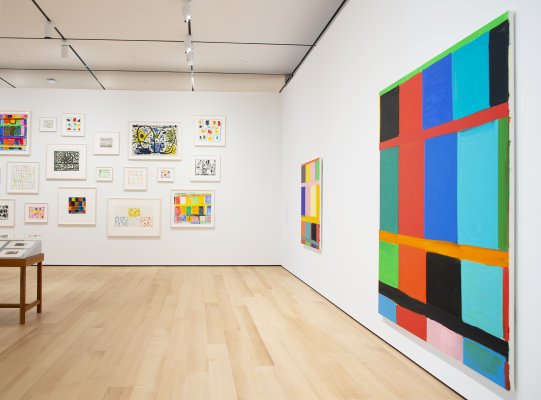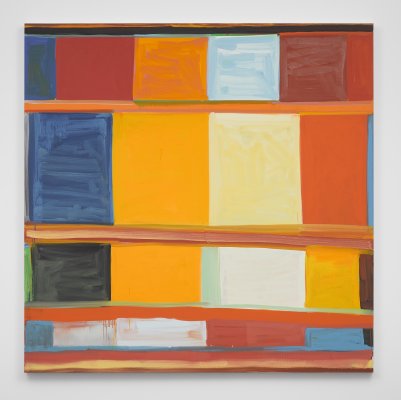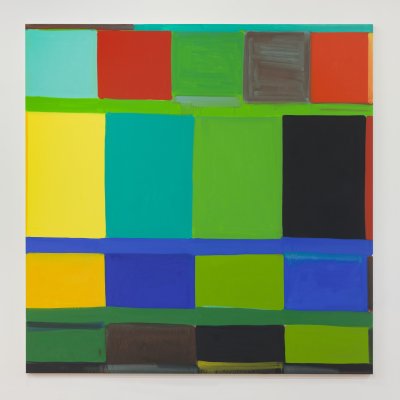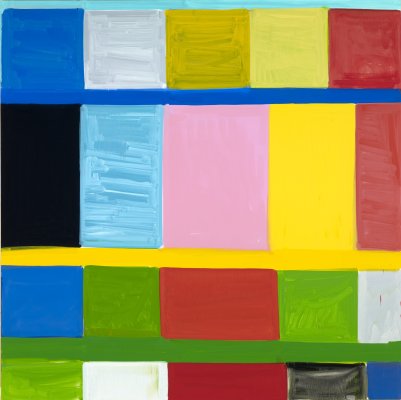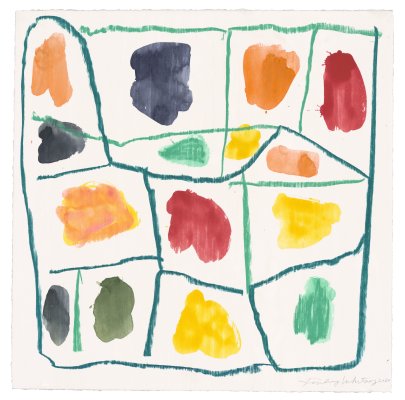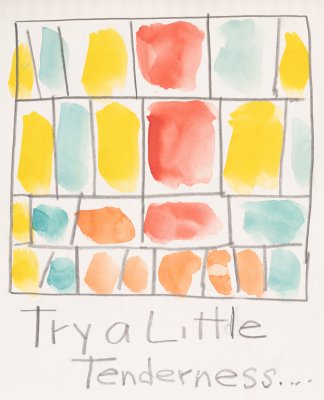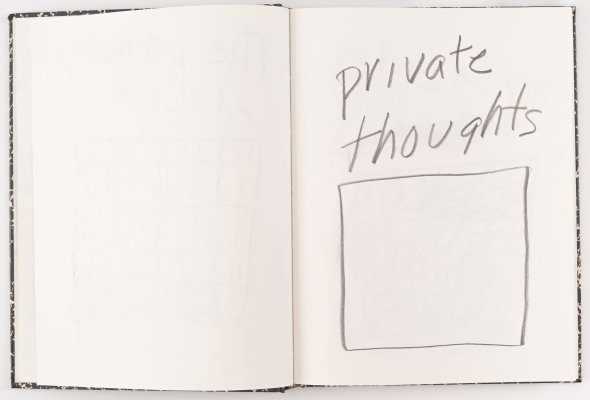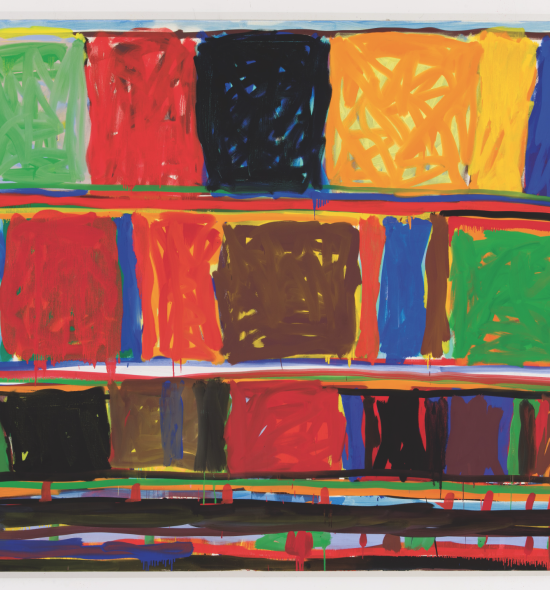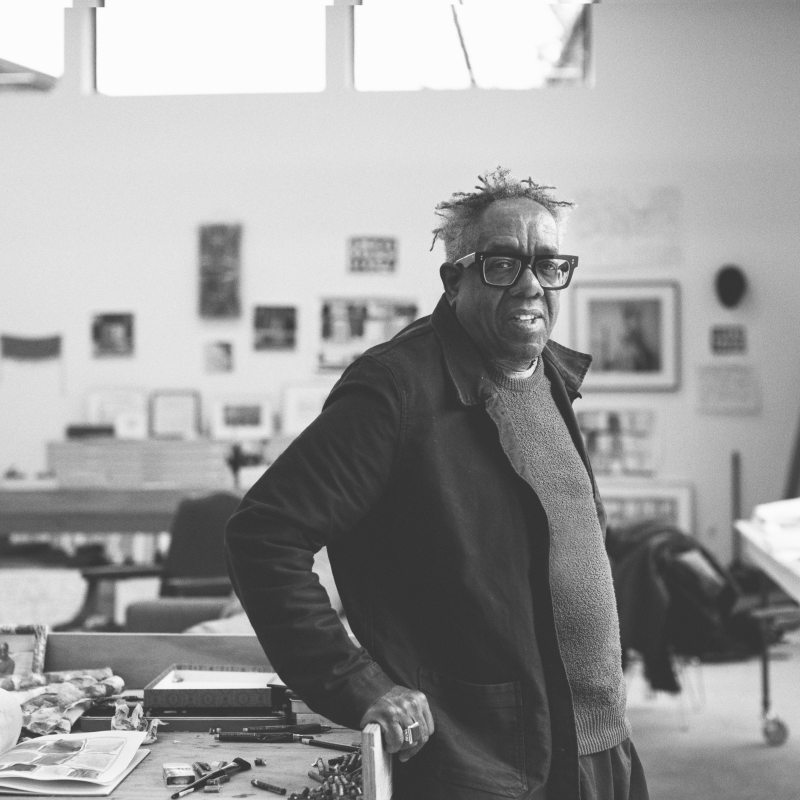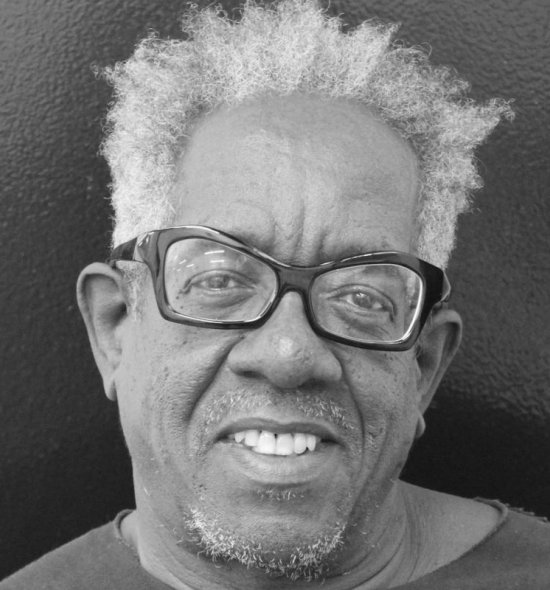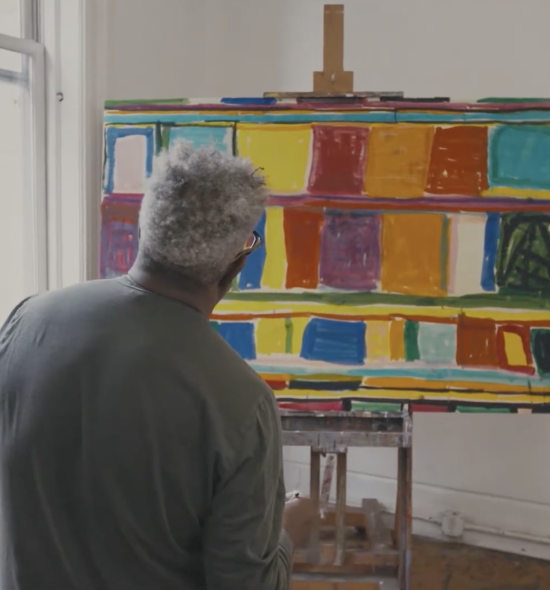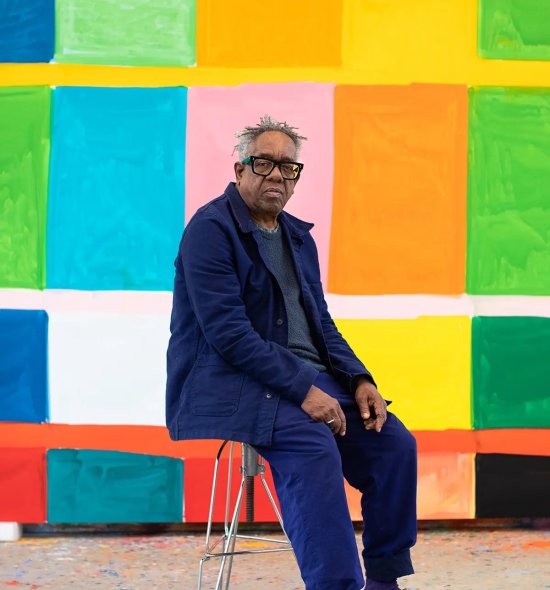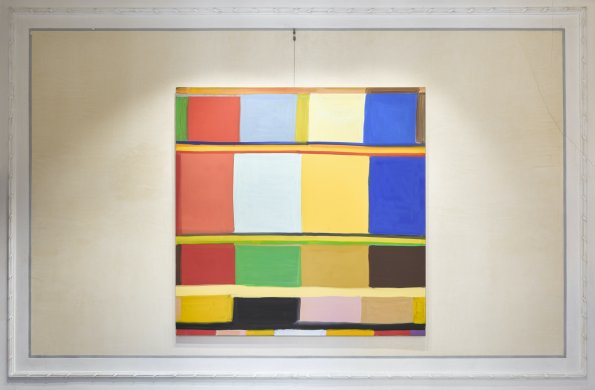From then on, this format became increasingly consistent. Planning each painting around a fluid grid allowed Whitney to focus on exploring color’s formal and evocative qualities: the way one pigment might recall an Italian Renaissance painting in one moment and in the next suggests the vibrant shirt of a passerby.
How High the Moon features extensive installations of the artist’s improvisatory small paintings; his drawings and prints, which constitute their own important practice for Whitney; and a chronological selection of the artist’s sketchbooks spanning from 1987 to 2021, which offer a view into Whitney’s engagement with the written word as well as politics. Throughout, his work is put in the context of his diverse sources of inspiration, which include music, poetry, American quilts, and the history of art and architecture, among many others.
Whitney's powerful, color-saturated abstractions give viewers the space to feel what it means to be human, to mentally wander, and to gather the strength to survive. This touring retrospective, the first survey of Whitney’s work ever assembled, demonstrates the true height of his achievement.
After its presentation in Buffalo, the exhibition will travel to the Walker Art Center (11/14/24–03/16/25) and ICA/Boston (04/17/25–09/01/25).
Stanley Whitney: How High the Moon is organized by the Buffalo AKG Art Museum and Curated by Cathleen Chaffee, Charles Balbach Chief Curator
